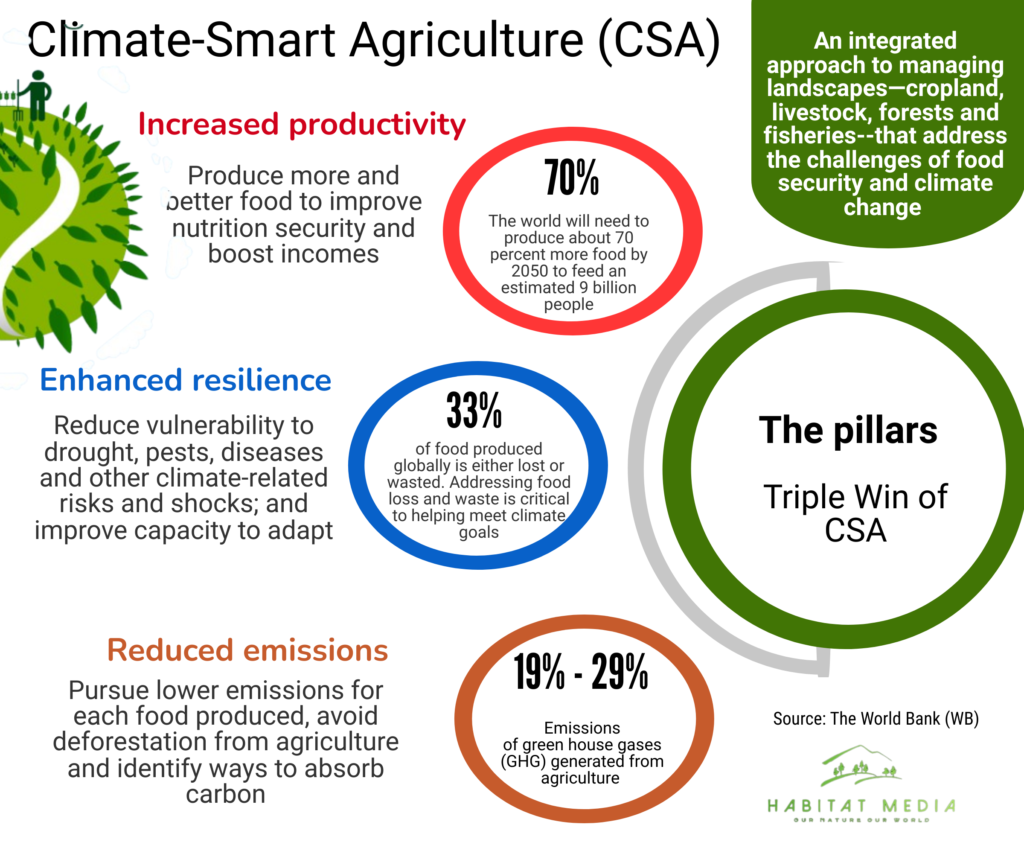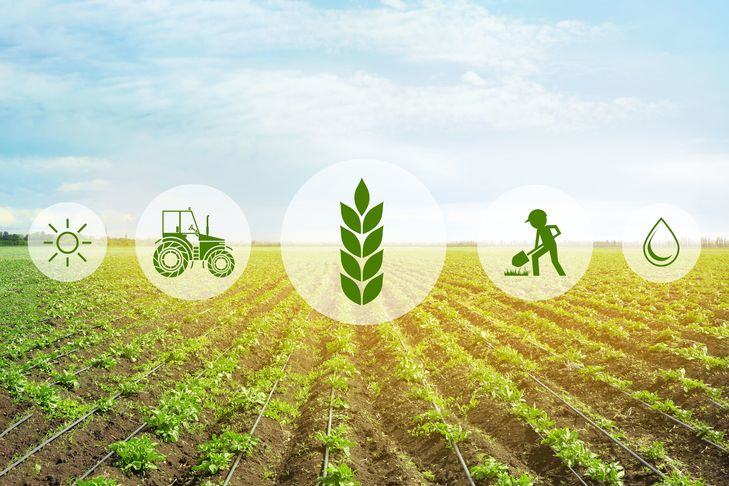Dar es Salaam. As word gathers in Dubai for the COP28 climate summit, stakeholders explain how Tanzania is going to achieve climate-smart agriculture (CSA).
After the Africa Climate Summit (the Nairobi Summit 2023) that commenced in September, Minister of State in Vice President’s Office Union and Environment Dr Suleiman Jafo said African countries, including Tanzania, will give one voice to COP 28 on how they are going to implement CSA.
Jafo said they have given priority to agriculture because climate change has mostly affected the sector and caused food shortages, noting that “the rains are not enough and most farmers depend on rain for agriculture, so we will need technology to move away from traditional farming.”
Showing the gap during Africa’s Food Systems Forum Summit’s (AGRF 2023) Tanzania President Samia Suluhu Hassan stressed that despite climate challenges, it is shame for African countries to complain about food shortages when 65 percent of arable land suitable for agriculture is on the continent.
Climate change expert Dr Fadhel Kaboub says Africa has enough resources to attain food sovereignty if it invests in agriculture to meet local needs and stops producing to meet others standards which after some time, they make our land less productive.
“We use a lot of artificial fertilizer and drugs, which leave our land barren. We need CSA for us,” said Dr Kboub, who is a professor of economics at Denison University – South Africa, during an online media café by MESHA and the IDRC Eastern and Southern Africa office.

CSA and how is it going to be implemented
Agriculture stakeholder Audax Rukonge said CSA covers the whole concept of whether you are deciding to do farming, fishing, or animal keeping, and when doing agricultural processing activities, you must think about how much you are going to contribute to the increase or decrease in climate change causes.
Rukonge then noted that “as a country, we need to focus on long-term agriculture infrastructure, invest in technology, and conduct research to mitigate the effects.”
Agriculture and Digital Transformation Expert from the Food and Agriculture Organization (FAO) Tanzania, Mponda Malonzo, says CSA has three pillars that aim to increase productivity, enhance resilience, and reduce emissions.
Mr. Malonzo, who formally was the Minister of Agriculture and Meteorologist, noted that “in periods of little rain or heavy rains, dry spells, or short rain seasons, this method helps. This is because the method covers the value chain of a product’s production. I mean from seed selection, land and fertilizers used to harvest, and product use.”
A farmer, Lucas Malembo, who practically uses CSA in farming, said productivity increases by three to ten times compared with modern farming methods, and technology use is key. This method only needs a small area; note that “small area for big results.”
“The method uses less water; for example, to get one kilogram of tomato, you need only 70 liters of water compared with at least 400 liters. Also, plant disease management is easy, and sometimes plants get no diseases,” he said, adding that the use of organic fertilizer is 75 percent less than the other farming method.
Malembo further added that the method helps in avoiding postharvest losses because farmers will harvest their product after they get a request from the buyer. “I only sell when someone requests my product; I use a digital platform to connect with my buyers,” he said.
According to him, research shows farmers’ postharvest losses are 30 to 40 percent. He then adds that CSA is also urban farming, as it requires a small area and sometimes vertical agriculture.
Malembo, who is also the managing director of Malembo Farms, noted that “in comparison with traditional farming, the initial cost might be higher, but the operation cost is lower as the installed technology can last for seven or more years, while the other methods initial costs can be lower, but the operation cost is higher.
Agriculture tech company Altitude X Managing Director Rose Funja suggested the country should apply Integrating the concept of Digital Public Infrastructure (DPI) into Tanzania’s Climate Smart Agriculture (CSA) initiatives which she believe it can enhance the effectiveness and efficiency.
“DPI involves leveraging digital technologies to provide foundational services and data that can be accessed by the public, businesses, and government entities. And it compose digital weather and climate Information and precision agriculture technologies.
Other services she mentions were digital extension services, financial inclusion, market information systems, digital soil health assessment, blockchain for supply chain transparency, data analytics for decision-making, cybersecurity measures and collaboration with tech innovators:
What the government is doing
Ministry of Agriculture Director of Crop Development, Nyasebwa Chimagu, outlines five key issues, saying that the ministry knows the importance of the CSA and is taking it as a climate change issue and an issue that resulted from human activities.
He mentions research, irrigation, water conservation, dealing with pests and diseases, and information sharing.
“The ministry has devoted itself to seeds research that is climate resilient; examples are sunflowers, “Record” seeds, and maize “T105” that have been proven to work,” he said, noting that in the current budget, the government has set aside Sh80 billion for agriculture research.
The Director further noted that due to the little rain in recent years, the government is providing education to farmers on how they can conserve water in rainy seasons and, in another area, repairing and building irrigation infrastructure.
“In the three budgets, the government set Sh361 for irrigation so that we can build the long-term irrigation infrastructure for the country, as we know we are rich with groundwater bodies,” said Chimagu.
Dealing with pests and diseases, he mentions the Tanzania Plant Health and Pesticides Authority (TPHPA), an organization that has the capacity to give out information and forecasts that deal with annoying insects and diseases.
Mr. Chimagu also mentions supporting and improving traditional ways of dealing with pests and diseases, giving the example of the neem tree, which is toxic to some pets.
Reaching farmers
Malembo says he has established himself and is well connected with experts and buyers, and he has his farm in Dar es Salaam, but the problem is for other farmers, of whom he said most are not easy to reach.
On that point, Malonzo commented that FAO and the Ministry have come out with guidelines for CSA, and they are online and can be reached by anyone. They have also reached every district in Tanzania to provide education to farmers and extension officers.
“Because the technology also needs digital information, the guidelines suggest the use of solar power in areas with no electricity access,” he said.
In disseminating information, the director mentions they have started with TPHPA and extension officers who are connected with farmers who receive information through their mobile phones through text messages.
This story was produced with support from MESHA and IDRC Eastern and Southern Africa office.


